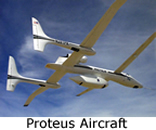Introduction
The National Polar-orbiting Operational Environmental Satellite System Airborne Sounder Testbed - Interferometer (NAST-I) instrument is a scanning interferometer which measures emitted thermal radiation at high spectral resolution between 3.3 and 18 microns (specifications). The measured emitted radiance is used to obtain temperature and water vapor profiles of the Earth's atmosphere. NAST-I produces sounding data with 2 kilometer resolution (at nadir) across a 40 kilometer ground swath from a nominal altitude of 20 kilometers onboard a NASA ER-2 aircraft or similar coverage from the PROTEUS aircraft.Software
NAST-I data are stored in network common data format (netCDF). Programs for reading NAST-I data in this format are available in Fortran, IDL, Matlab source code. To visualize NAST-I data, a Matlab browser is used for basic image viewing.- netCDF Operators Homepage
- UNIDATA page on netCDF data format
- Matlab data visualization software (David Tobin, UW). Requires installation
of Matlab NetCDF utilities.
[tar file] [zip file]
Algorithms
Algorithms using NAST-I data are being developed to retrieve remotely sensed
temperature and water vapor profiles, sea surface skin temperature, land surface
temperature and emissivity, cloud top temperature and emissivity, and trace
gas total column amounts.
[Top]
Partners
The NAST-I instrument was built by MIT-Lincoln Labs with calibration reference sources provided by the University of Wisconsin - Madison Space Science and Engineering Center. The interferometer module was provided by Bomem, Inc. of Quebec, Canada. The NAST-I instrument is operated by NASA Langley Research Center (LaRC) with support from the University of Wisconsin - Madison. Support for NAST-I development has been provided by NASA and the Integrated Project Office (IPO). The companion NAST-M instrument (Microwave sensor) was built, and operated by, Massachusetts Institute of Technology.[Top]
Related Links
- HIS
- SHIS
- CAMEX Mission Viewer
- WINTEX Misson Viewer
- CAMEX-3 Homepage
- Wisconsin CAMEX-3 Andros Homepage

